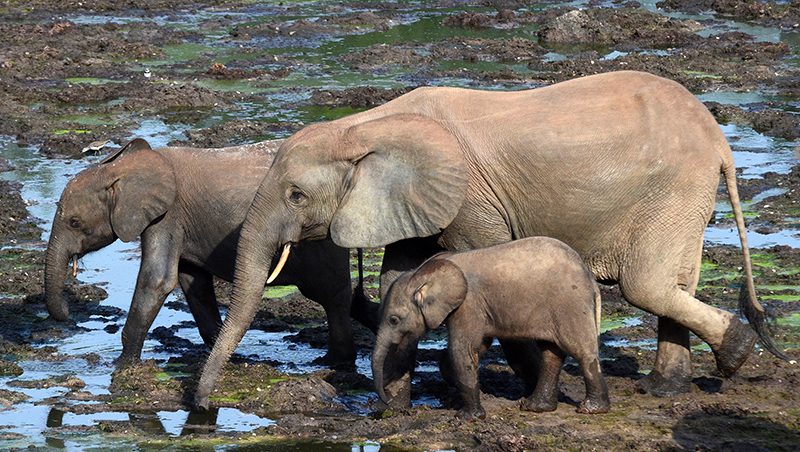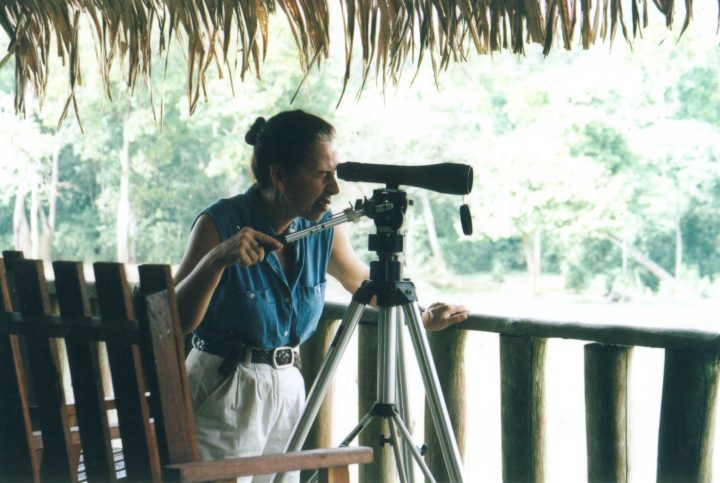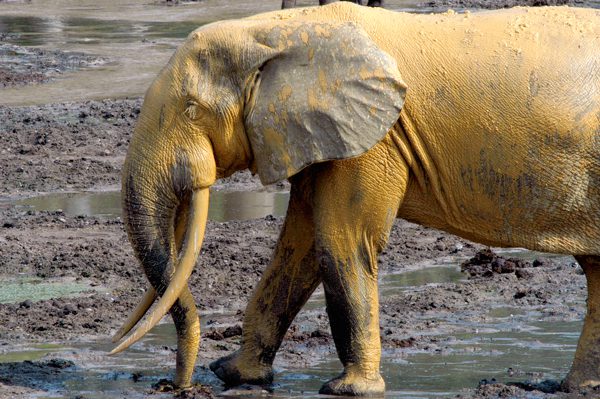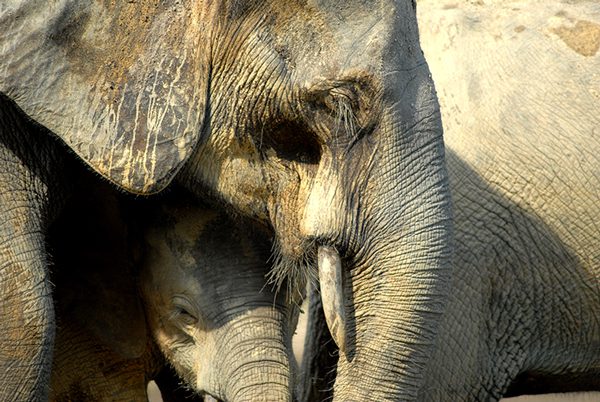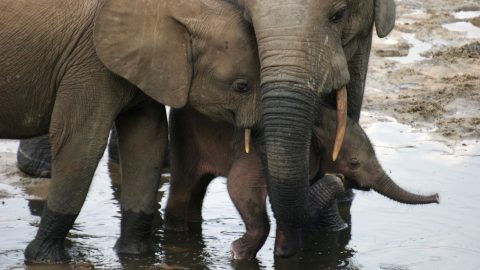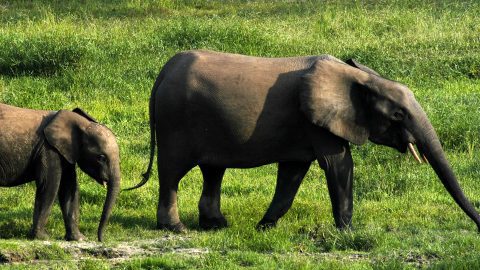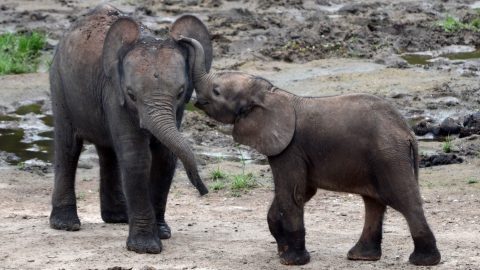Elephant Tails
Not long ago Ahmed, the huge male pictured below, sauntered into the clearing in the state of musth. Andrea was so excited, having not seen this guy for nearly ten years – where had he been wandering all this time? One of the biggest, and at 65 years old one of the oldest males in her population, he was first identified in 1991. For ten years he came to the bai every year in late December, stayed a week or so, then was off. In the early 2000s his life must have changed and Andrea saw him only sporadically until, in 2006, he disappeared. Now he’s back – big, bulky, huge tusks, and apparently wise. To the east, savannah elephants of this age are rare to entirely absent because they have been poached for their ivory, but we are fortunate that big bulls are still hanging on in Central Africa.
The Difference a Matriarch Makes
Aida kept her family together for years reassuring and helping her daughters when they gave birth to their first offspring dealing with a rebellious son as he transitioned into that world of young-adult males. In an environment where families more often divide into smaller parts, Aida kept hers together.
Through those years Aida’s children and grandchildren learned her tricks for surviving in a jungle and now she is gone.
Aida, of course, was a forest elephant, but her story could fit mothers and families of another species as well—ours. There is a stability and a calm that mothers provide their families, and strength too. Some of us can imagine (probably surprisingly well) how comforting and important it was to Aida II to have her mother’s calm presence nearby when her first baby was born. (See the sidebar to learn more about Andrea’s naming convention.)
Andrea knows this family well because they are frequent visitors to the bai. Since 1991 when she first identified Aida, Andrea has seen Aida and her family more than 700 times. Aida’s daughter, Aida II, was only 7 years old when she first sauntered into the bai with her mother and Andrea has chronicled her life through her childhood, her teens, and the birth of three calves!

Ahmed – 65 years old © Andrea Turkalo 
Aida and her youngest daughter, AidaV, in 2010
Although the family was together as usual in November 2012, Aida was conspicuous by her absence in early March, 2016, when her daughter brought the family into Dzanga Bai for a couple of weeks. Aida, at more than 50 years of age, may have died naturally (her deeply-sunken cheeks in the picture suggests loss of teeth), or she was killed for her small but still valuable tusks. We all must lose our mothers eventually, diminishing the richness of our lives. I wish we could have known the emotions of Aida II on that March day without her long-time companion, her mother, her teacher. But Aida left a strong and cohesive family that Aida II, pictured below, now leads through the challenges of Africa’s rainforest.
